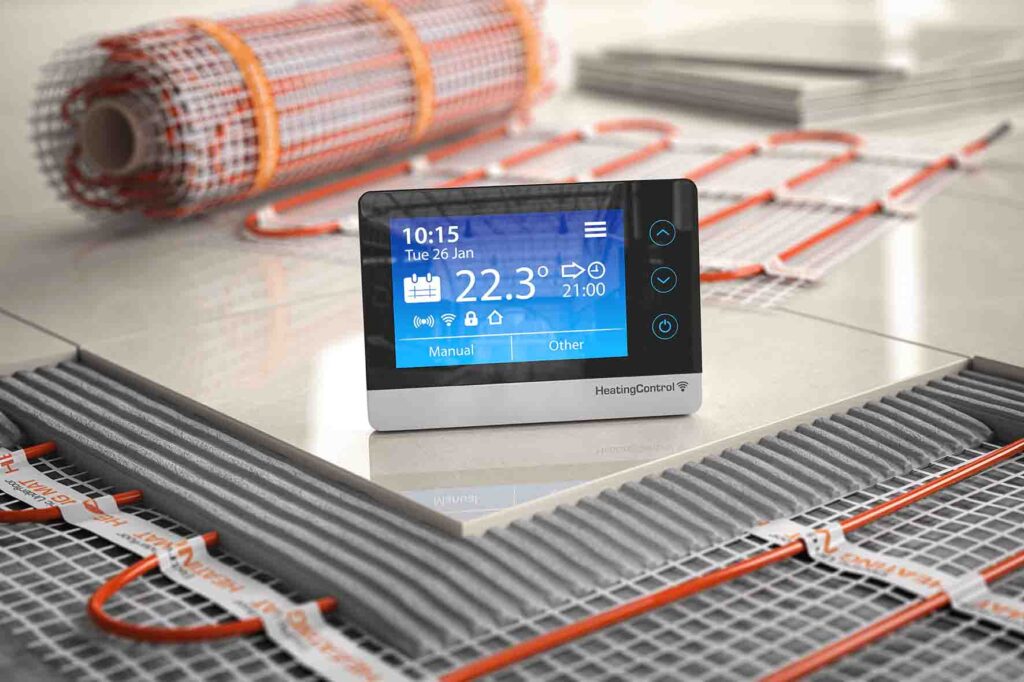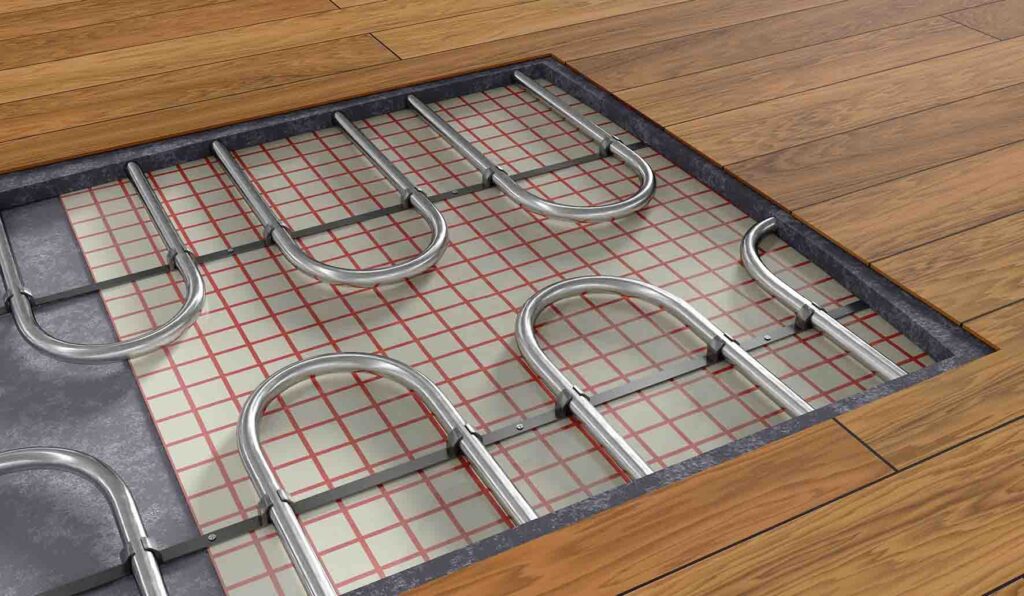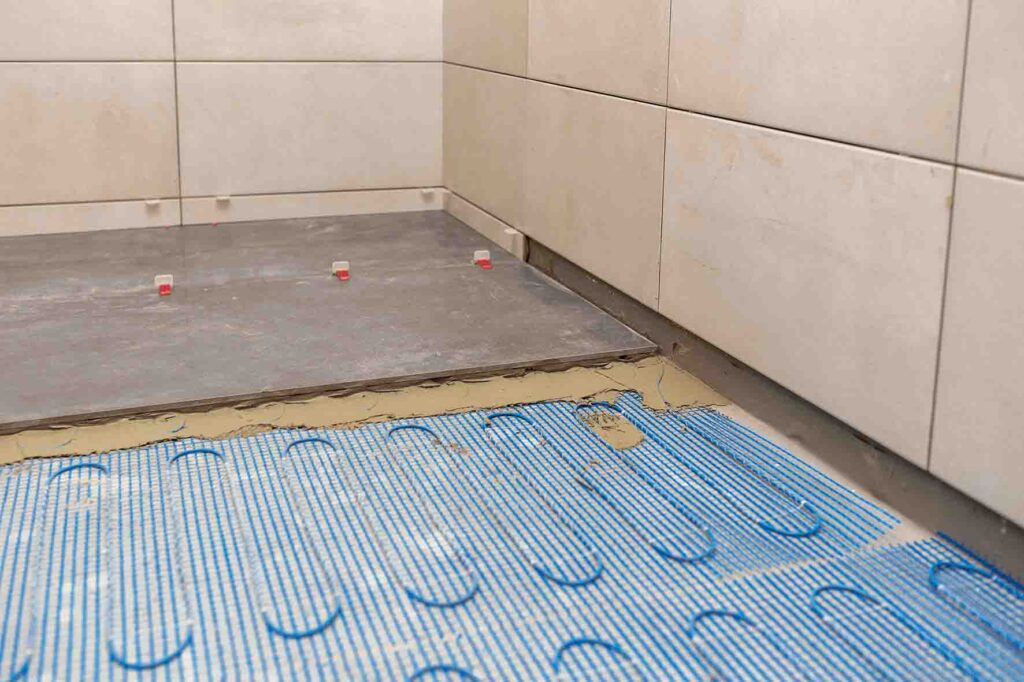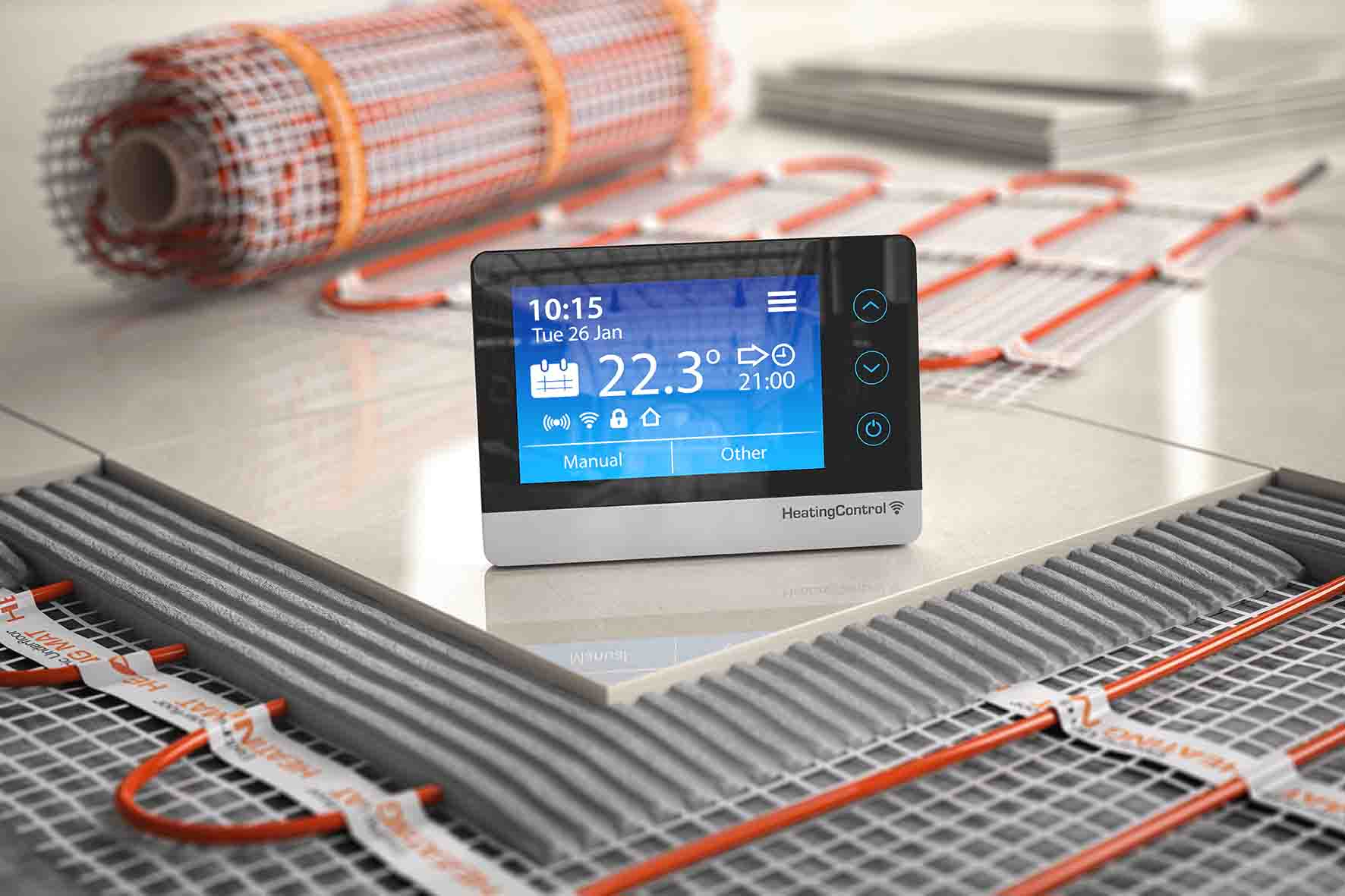The interest in underfloor heating and its application in energy control techniques has increased a lot in recent years. Nowadays, many people are considering incorporating it in their homes, as it is a trend that is revolutionising the market. Ceramic tiles are commonly used with underfloor heating. This is because it is a good heat-conducting material. Continue reading so you can learn how tiling on underfloor heating works.


WHY CHOOSE TILES FOR UNDERFLOOR HEATING?
Tiling on underfloor heating is starting to be used in new constructions or home improvements to reduce the energy cost of the heating system in private homes, companies, etc. This heating method can be installed by means of a hot water system under the floor and tiles.
The main advantages of this system, compared to the traditional ones, is that we can improve our way of heating the home in a much more ecological, cleaner and comfortable way.
In addition, new manufacturing technologies have recently incorporated digital printing on ceramics. So there is a wide variety of designs available for tiling on underfloor heating.
HOW DOES AN UNDERFLOOR HEATING SYSTEM WORK?
This heating system is based on the fact that we take advantage of the heat that we distribute underneath the floor. This can be done either by electrical means or by water ducts, and transmit it evenly throughout the surface.
As we already know, hot air is lighter than cold air and will therefore rise. This then heats the surface and the air in the room simultaneously. There are two types of power supply for this heating system:
1) Piped underfloor heating – hot water is passed through ducts under the tiles.
2) Electric underfloor heating – either by metal heating elements or by carbon fibre wires as heating elements.
It should be noted that the hot water system has an advantage over conventional systems. Water circulating through the ducts can be at half the temperature, with the corresponding savings.

MAIN ADVANTAGES OF UNDERFLOOR HEATING FLOOR TILES
NO COLD ZONES
With underfloor heating, heat will be generated evenly from the floor. It will even be pleasant to walk barefoot. There should be no hot spots or cold spots.
In addition, the fact that the heat rises means that you will not feel any temperature differences in your body, avoiding the sensation of cold feet.
QUIET AND INVISIBLE
Underfloor heating is the invisible heating system. You won’t see it and you won’t even hear it. There are no fans, no ducts in the floor and no radiators in the wall. This makes the system and the overall atmosphere in the house much quieter.

CLEANER
Underfloor heating is a cleaner system, as without radiators and appliances, no dust can be stopped or draughts created. Consequently, there is less risk of coming into contact with germs and dust therefore avoiding possible cases of allergies.
HEALTHY
Underfloor heating does not dry out the air like a forced air system, and there is less heat loss when the doors are opened. If we install it at home we could even open the windows for ventilation and not lose significant degrees of heat.
Also, if we talk about health, it is worth saying that people with allergies have fewer problems with underfloor heating because of the possibility to ventilate rooms.
WHAT IS THE BEST MATERIAL FOR FLOORING ON UNDERFLOOR HEATING?
Ceramic is the most common and effective material for covering underfloor heating tiles. This is because it conducts heat well and adds thermal storage due to its high heat capacity.
Other common floor coverings such as vinyl, laminate materials, carpet or wood can also be used, but the insulating effects of each material must be taken into account. Any flooring that helps to insulate the room floor will decrease the efficiency of the heating system.

In addition, the material itself may suffer from swelling if it is not made to tolerate heat well, such as solid wood. Recently, imitation wood tiles have come onto the market that allow the appearance of wooden flooring, but maintain the properties of ceramic.
And as we know that to enjoy underfloor heating, a good installation is essential. Read our blog here to learn how to avoid common mistakes when tiling.
Ceramic and porcelain tiles have proven to have the best behaviour in the heat of underfloor heating, mainly due to their performance. Now, why do these features favour ceramic as a material for this type of installation? The main reason is that ceramic and porcelain tiles are materials with a high heat conduction and storage capacity.
On the other hand, ceramic tiles are the best solution to counteract the expansion that temperature changes can cause to materials. Due to the wide range of possibilities of this material, laying ceramic floors is a very common task for both construction professionals and DIY enthusiasts.



Post a comment